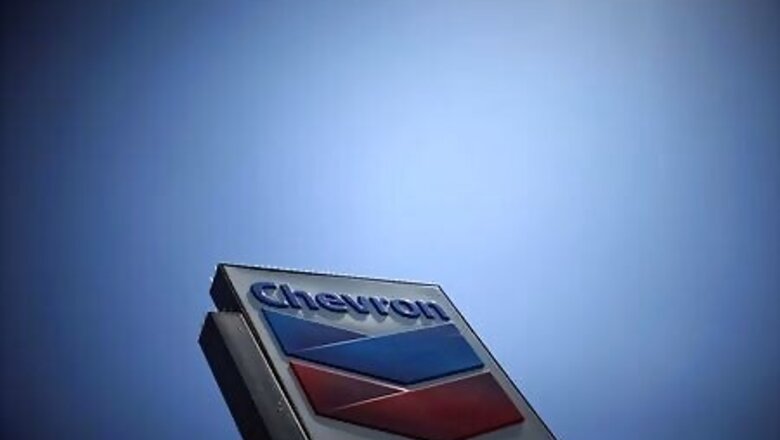
views
HOUSTON Chevron Corp on Friday reported an $8.3 billion quarterly loss, its largest in at least three decades, and joined rival oil producers in writing down billions of dollars in assets due to plunging demand for fuel.
Chevron’s oil and gas production writedowns totaled $5.6 billion, mirroring those in recent days at Total, Royal Dutch Shell, and Eni, and an anticipated asset writedown of up to $17.5 billion from BP.
The lowering of valuations reflect the slump in second-quarter demand due to the COVID-19 pandemic, and a growing realization that a prolonged economic downturn could depress energy prices for years. U.S. gross domestic product contracted last quarter at a 32.9% annualized rate, the deepest decline in economic activity in modern history.
“It will take years for that to recover and the price for our products is tied to economic activity,” Chevron Chief Financial Officer Pierre Breber said in an interview.
Chevron’s writedowns included its entire investment in crisis-ravaged Venezuela, where it was the last major U.S. oil company still operating. The Trump administration has directed it to wind down its business there.
The loss includes $1 billion to cover severance pay for up to 15% of its 45,000-person workforce as part of an ongoing restructuring of its global operations.
Rival Exxon Mobil Corp also posted a loss on lower prices and production and said it was in the midst of reviewing operations, promising “significant” cost cuts.
Chevron’s latest writedowns follow a $10 billion charge it took to reduce the value of mostly natural gas properties in the fourth quarter of 2019.
Output last quarter fell by about 189,000 barrels of oil and gas per day compared with a year ago, reflecting its efforts to limit losses by curtailing production and earlier property sales.
The writedown of oil and gas properties included non-shale operations in the Permian Basin, the top U.S. oilfield, offshore Gulf of Mexico fields, and undefined properties outside the United States, Breber said.
“We would need to see sustained economic recovery and much lower inventory levels before we would add capital back to the Permian or other basins,” Breber said. “We’re in a lower-for-longer world where demand is down and there’s ample supply.”
Chevron, which has won plaudits for its recent ability to fund shareholder payouts and capital spending from operations, generated no cash flow from operations, instead consuming $643 million in the quarter.
Despite this, the company “exited the worst quarter in recent history with a strong balance sheet and well-positioned to support its dividend,” said Jennifer Rowland, analyst with Edward Jones.
The writedowns pushed Chevron’s loss to $8.27 billion, or $4.44 a share, compared with a profit of $4.3 billion, or $2.27 a share, a year ago. Adjusted loss was $3 billion, or $1.59 per share, compared with a profit of $3.4 billion, or $1.77 per share, last year, it reported.
The loss reflects an average 65% reduction in the prices received for its petroleum produced last quarter as demand plummeted amid COVID-19 travel restrictions and declining industrial demand for fuels.
Chevron shares fell 2.7% to close at $83.94 and are off 31% year to date.
The company has resisted leaving Venezuela, arguing its presence was a stabilizing presence and supported local workers. Any exit would hand over its assets to Russian or Chinese oil companies, it has said. Chevron has operated in the country for nearly 100 years, mostly recently through joint ventures with Venezuelan state oil company PDVSA.
But the Trump administration gave Chevron until December to wind down its business there amid U.S. sanctions designed to oust the government of socialist President Nicolas Maduro. Chevron wrote off the $2.6 billion value of its Venezuelan assets, which in June produced 7,000 barrels per day, Breber said.
Disclaimer: This post has been auto-published from an agency feed without any modifications to the text and has not been reviewed by an editor
















Comments
0 comment